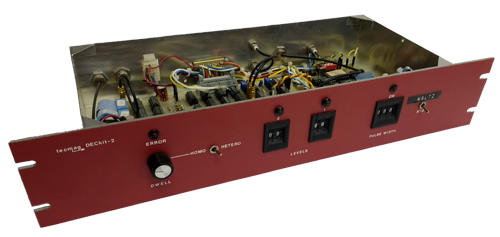

Tecmag Today
In October of 2018, after 35 years with Dr. John Delayre as President, Tecmag was acquired by Avingtrans PLC subsequently becoming a subsidiary of superconducting-magnet designer/producer Scientific Magnetics Ltd, based in the UK.
Fast-forward to 1Q 2021, when Tecmag merged with Scientific Magnetics Ltd., and Brisbane-based Magnetica Ltd. This resulted in the formation of the newest MRI System Original Equipment Manufacturer (OEM) in the clinical and research MRI markets globally.
Today, Tecmag forms one third of the Magnetica group of companies and is continuing to develop and innovate for the magnetic resonance community.
Tecmag - Detailed History
Founding ( – 1983)
In 1982, while Assistant Professor at Harvard Medical School, Dr. John Delayre was designing and building a complete observe channel (transmitter and receiver) for an NMR experiment that involved looking silmultaneously at Proton (H1) and Phosphorous (P31) resonance properties of a perfused beating rat heart in a 20 mm sample tube, the first channel being provided by a commercial spectrometer.
At that time, several scientists were designing their own NMR instruments: Dave Ruben at MIT, Dick Wittebort in Louisville, Bob McKay in St Louis, Bob Santini at Purdue, Rudi Nunlist at Berkeley, to name a few. It seemed a good idea to offer other scientists a proven design to upgrade their NMR spectrometers.
The NMRkit was then created, the name coming from the HeathKit concept which, at that time, was very successful. The NMRkit had two different versions: the one to build with all the necessary parts including printed circuit boards, and the one already built and tested. The name of Tecmag was used as the manufacturer of the NMRkit. Flyers were sent to numerous scientists, thanks to the Experimental NMR Conference (ENC) mailing list.


Interestingly enough, the first product delivered by Tecmag was not the NMRkit. In early 1981, the Cardiology Department of Hershey Medical School was highly interested in P31 NMR studies of the heart. They had just acquired a TMR (Topical Magnetic Resonance) from Oxford Instruments, an instrument that was focusing the magnetic field into a ball of roughly 20mm. Dissatisfied with the computer system, they had asked John to upgrade their system with a Nicolet computer, which he did. They also wanted to perform proton decoupling experiment on this same instrument for which no device existed. John built the decoupler, the DECkit, which was installed in October 1982.
When John joined the University of Houston Medical School in June 1983, he decided to incorporate Tecmag in Texas as a C corporation, which was done on May 6, 1983. After staying at UTMS for another 2 1/2 years, he decided to work full time at Tecmag; he hired its first employee, Woody Kim, in April 1986. One company (MRW) in Houston had just ordered 3 NMRkits and another in Philadelphia (Phospho-Energetics) had ordered 5 pulse programmers. The future was looking bright!
At the 1987 ENC in Asilomar, Tecmag introduced the Scorpio–a μVAX-based Real-Time NMR Station with complete NMR software called PULSE-123. Soon after the μVAX manufacturer, Digital Equipment, upgraded their OS and FORTRAN with an outrageous cost. Consequently sales for the Scorpio jumped.
Around this time the Macintosh II computer was being introduced, and at the 1988 ENC in Rochester, the Macintosh-based LIBRA was unveiled with its associated software package, MacNMR. For the first time in the industry, Tecmag provided its customers with a completely graphical pulse programming platform! Interfacing the LIBRA and its variations (a.k.a. the Zodiac consoles) to various commercially available consoles by Bruker, JEOL, Varian, Nicolet, GE, etc. became the main focus of the company.
1989 saw the birth of the Tecmag NMR Quiz which was one of the great attractions of the ENC through 2004. After correctly answering 8 questions on NMR / Tecmag history and technology, attendees had a chance to win tech ranging from a digital camera to a Macintosh computer or PC Laptop!
A few things happened in the following few years. First, changes at Apple gave some indication that the Macintosh may not be the platform of choice for controlling Tecmag hardware for the years to come. Consequently, the company began to transition MacNMR software to the Microsoft Windows operating system running on a majority of PCs. Secondly, while selling the Zodiac systems, work was started on developing Tecmag’s first complete NMR console including RF synthesis, and in 1997 the company introduced the APOLLO with NTNMR running on Microsoft Windows NT. With the APOLLO, the customer only needed to supply the magnet, probe, and RF amplifiers making it an ideal system for console replacements and do-it-yourselfers alike.
The following year, the DSPect and the ORION were introduced for customers still looking to upgrade existing consoles like the Bruker AC300. Both products were based on the Apollo architecture and controlled by NTNMR.
In response to market demands for even more of a complete console-replacement solution, the DISCOVERY was introduced in 2000, and it could include a RT shim power supply, VT controller, MAS spin speed controller, “magnet leg”, and high power RF amplifiers–customers only need a magnet and probe. The DISCOVERY and APOLLO were able to be configured for use in NMR, magnetic resonance imaging (MRI), and nuclear quadrupole resonance (NQR).
In the early 2000s, Microsoft moved away from Windows NT, and Tecmag’s software was renamed TNMR. Unknown to most, Tecmag became an Original Equipment Manufacturer for multiple clinical imaging companies who used (and are still using) hundreds of Apollo MRI systems controlled by TNMR in their scanners operating worldwide.
With a growing interest arond the globe for field-deployable technology for NMR and NQR, Tecmag was also approached on a number of occasions with requests for a small scale, portable or benchtop spectrometer configuration. In 2006 the first commercially available portable NMR console, the LapNMR, was unveiled. Capable of fitting in a backpack, running on a 12V flatpac battery, and controlled by a laptop PC, the LapNMR continues to be popular for work out in the field, in hazardous industrial environments, and in academic settings as a demonstration/teaching system.
In the 2000s, Tecmag continued developing with the latest standards in technology.
In 2009, Tecmag unveiled a new spectrometer based on a scaleable high-speed bus architecture to replace the Apollo–The REDSTONE. Unlike the Apollo, the Redstone is capable of being configured with almost any number of transmitter, receiver, and gradient channels. The SCOUT, a new portable system based on the Redstone architecture and with improved specifications over the LapNMR, was soon released thereafter in 2011.
Like with the Apollo, the Redstone can be packaged into a full console system–the DISCOVERY–configurable for liquid-state and solid-state NMR applications, low-temperature materials/condensed matter physics work, or for imaging.



